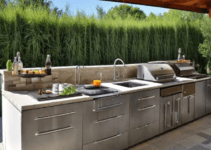Learn about the causes and solutions for moss growth on roofs. Discover effective methods for manual removal, chemical treatments, and preventative measures to keep your roof in optimal condition and enhance its longevity. Ensure your home remains visually appealing and structurally sound by addressing moss issues promptly.
Understanding Moss Growth on Roofs
Moss growth on roofs is a common issue that homeowners often encounter, particularly in regions with high humidity and significant rainfall. The presence of moss is primarily due to environmental factors that create a conducive habitat for its proliferation. Shade, moisture, and the accumulation of organic debris are the primary catalysts for moss growth. Roofs that are frequently shaded by trees or neighboring buildings receive less direct sunlight, creating a damp environment where moss thrives. This moisture, combined with organic matter such as leaves and twigs, provides the nutrients moss needs to flourish.

Addressing moss growth is crucial due to the potential damage it can inflict on roofing materials. Moss holds moisture against the roof surface, leading to prolonged dampness that can deteriorate shingles or tiles over time. This moisture retention can cause wood to rot and asphalt shingles to degrade, compromising the structural integrity of the roof. Furthermore, the root-like structures of moss can penetrate small cracks in the roofing material, exacerbating existing weaknesses and leading to leaks. These leaks can result in significant water damage to the interior of the home, including insulation, ceilings, and walls.
Read this article and do not forget to check our YouTube channel “Grig Stamate” for tones of amazing videos:
https://www.youtube.com/@GrigStamate
House Tours, #23 – Small Family Homes with Comfortable Interiors (video)
Beyond the structural concerns, moss growth on roofs can also detract from the visual appeal of a property. A moss-covered roof often looks neglected and can lower the overall aesthetic value of a home. This is particularly important for homeowners looking to sell their property, as curb appeal plays a significant role in attracting potential buyers. By understanding the conditions that foster moss growth and the potential risks it poses, homeowners can take proactive steps to mitigate this issue, ensuring their roof remains both functional and visually appealing.
Method 1: Manual Removal of Moss
Manual removal of moss from your roof is a straightforward approach that requires minimal tools but demands careful execution to prevent damage to roofing materials. The essential tools for this task include a stiff-bristle brush, a scraper, and appropriate safety equipment such as gloves, safety goggles, and a sturdy ladder. Ensuring you have the correct equipment will facilitate an efficient and safe cleaning process.
Begin by positioning your ladder securely and ensuring that it is stable before you climb. Safety should always be your top priority. Once you have safely ascended to the roof, use the stiff-bristle brush to gently scrub the moss off the shingles. It is important to brush in a downward motion to avoid lifting and damaging the shingles. For more stubborn moss, a scraper can be used; however, exercise caution to avoid scraping too hard, as this can harm the roofing material.
As you work, systematically move across the roof in sections, ensuring that no moss is left behind. Pay particular attention to areas that are shaded or retain moisture, as these are prime spots for moss growth. During the removal process, take frequent breaks to assess your progress and ensure that you are not inadvertently damaging the roof.
One common mistake to avoid is using high-pressure washing or harsh chemicals, as these methods can strip the protective layers off your shingles and lead to long-term damage. Instead, rely on the physical action of the brush and scraper, complemented by patience and diligence. Additionally, ensure that all debris is removed from the roof and gutters to prevent further moss growth.
Thorough manual removal of moss will not only improve the appearance of your roof but also prolong its lifespan by preventing the moss from trapping moisture and causing decay. By following these steps and taking the necessary precautions, you can achieve a moss-free roof effectively and safely.
Method 2: Chemical Treatments for Moss Removal
Chemical treatments for moss removal are widely regarded as one of the most efficient methods to eliminate moss from your roof. These treatments generally include moss-killing sprays and solutions specifically formulated to target and destroy moss and other lichens.
One of the most effective chemicals used in moss removal is zinc sulfate, often available in powder or liquid form. Zinc sulfate works by directly killing the moss on contact, making it a popular option for homeowners. Another commonly used chemical is potassium salts of fatty acids, which are biodegradable and less harmful to the environment while still being effective in moss eradication.
The application of these chemicals should be done with caution and adherence to safety guidelines. It is essential to wear protective gear, including gloves and goggles, to avoid direct contact with the chemicals. Additionally, ensure that the moss-killing solution does not come into contact with other plants or wildlife, as it can be harmful. Applying the chemical treatment on a dry day when no rain is expected will help the solution adhere better to the moss, ensuring maximum effectiveness.
Environmental considerations are also crucial when using chemical treatments. Some chemicals can be hazardous to the surrounding environment, particularly if they runoff into nearby water sources. Opting for eco-friendly moss removal solutions can mitigate these risks. For instance, potassium salts of fatty acids are less likely to harm the environment, making them a safer alternative.
Frequency of application can vary depending on the severity of the moss infestation. Generally, applying chemical treatments once or twice a year is sufficient to keep moss at bay. However, heavily infested roofs may require more frequent treatments initially. The results from using chemical treatments can be seen within a few days to a week, with the moss turning brown and eventually falling off the roof.
In conclusion, chemical treatments provide an effective solution for moss removal. By choosing the right chemicals and applying them safely, homeowners can maintain a moss-free roof while considering environmental impacts. Regular application and monitoring will ensure long-lasting results, keeping your roof in optimal condition.
Method 3: Preventative Measures to Keep Moss Away
Ensuring your roof remains free of moss is essential for the longevity and aesthetics of your home. One effective preventative measure is the installation of zinc or copper strips along the ridge of the roof. When it rains, these metals release ions that create an environment hostile to moss, thereby inhibiting its growth. This solution is particularly effective and can keep your roof moss-free for several years.
Improving roof ventilation is another critical step in preventing moss. Proper ventilation reduces moisture buildup, a key factor in moss proliferation. This can be achieved by installing ridge vents, soffit vents, or attic fans, which promote air circulation and help in maintaining a dry roof surface.
Regular roof cleaning schedules are also paramount. By routinely inspecting and cleaning your roof, you can address minor moss growth before it becomes a major issue. It’s advisable to schedule professional cleanings at least once a year, especially in areas prone to moss. During these cleanings, ensure that all debris, including leaves and twigs, is removed, as these can retain moisture and foster moss growth.
Trimming overhanging branches can significantly reduce the amount of shade on your roof, making it less conducive to moss. Sunlight acts as a natural deterrent to moss, as it thrives in shaded, damp environments. By allowing more sunlight to reach your roof, you create conditions that are less favorable for moss to take hold.
Lastly, keeping gutters clear is crucial. Clogged gutters can lead to water overflow, creating damp conditions that encourage moss growth on your roof. Regularly inspecting and cleaning your gutters will prevent debris buildup and ensure proper water drainage, thereby reducing the risk of moss formation.
By implementing these preventative measures, you can effectively keep moss at bay and maintain the structural integrity and appearance of your roof for years to come.
Other related posts from our website:
https://howtobuildahouseblog.com/8-tips-for-choosing-the-perfect-metal-roof-tile-for-your-home/
https://howtobuildahouseblog.com/a-comprehensive-guide-to-skylights-and-roof-lights/
https://howtobuildahouseblog.com/beautiful-scandinavian-style-apartment-with-stunning-roof-terrace/
We sincerely hope that our video and post can help you.
Please, write your opinion in the comment section and do not forget to subscribe to our channel if you are new to our YouTube channel.
See you soon at another post.
Bye, Bye


